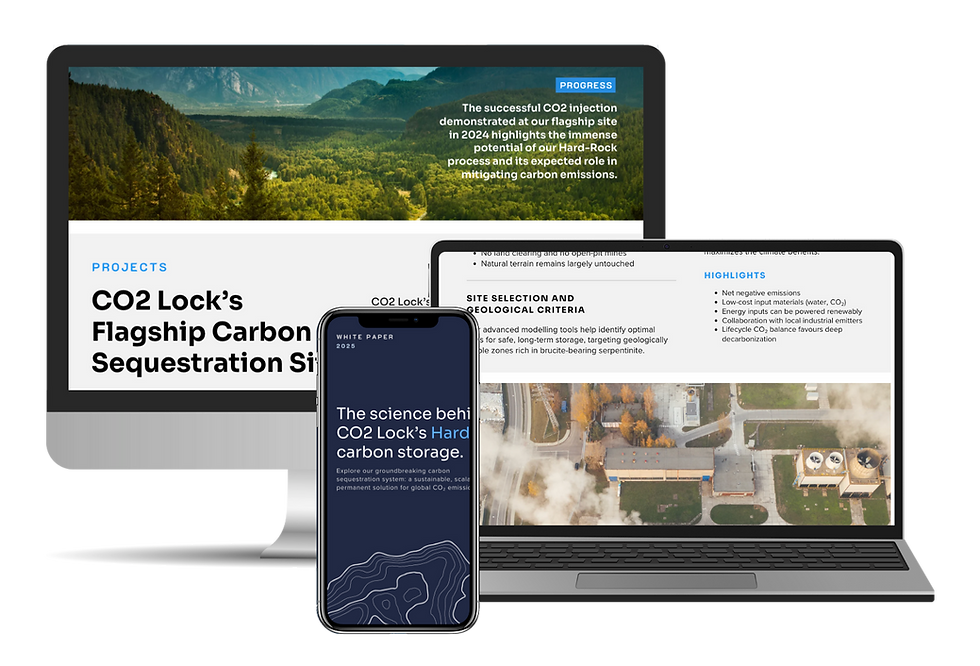

WHITE PAPER
Explore the science behind our Hard-Rock carbon storage.
Learn about CO2 Lock's groundbreaking carbon sequestration system: a sustainable, scalable, permanent solution for global CO2 emissions.



WHITE PAPER
Understanding the science behind Hard-Rock carbon storage.
Explore CO2 Lock's groundbreaking carbon sequestration system: a sustainable, scalable, permanent solution for global CO2 emissions.

Purpose
It's time to balance atmospheric CO₂ to reduce our environmental impact.
“The deployment of carbon dioxide removal... is unavoidable if net zero CO₂ or GHG emissions are to be achieved.” — IPCC

PROCESS
‘Hard-Rock’ sequestration with brucite.
By accelerating a natural rock reaction with brucite, we can convert CO₂ into stable solid carbonate minerals, which endure for millennia.

differentiators
Unlike silicate-based systems, brucite mineralization requires less energy and reacts faster under ambient conditions. The result is a low-cost, high-integrity form of carbon sequestration.

PROGRESS
Our Flagship Carbon Sequestration Site
The successful CO₂ injection at our flagship site near Prince George, BC, in 2024 highlights the immense potential of the Hard-Rock process and its expected role in mitigating carbon emissions.
HOW IT WORKS
OUR PROCESS
Understanding in-situ carbon mineralization.
This natural, underground process offers a low-impact, long-term carbon storage solution that requires minimal surface disruption while ensuring carbon is securely sequestered beneath the Earth's surface.


EX-SITU MINERALIZATION
An ex-situ process harnesses surface-level brucite deposits.
STACKED ROCK STORAGE
Exposed rock formations react naturally with atmospheric CO₂ over time, increasing mineralization.
ENHANCED ROCK WEATHERING
Crushed rock is spread over land to accelerate CO₂ absorption through natural weathering.
MINERALIZATION REACTOR
A controlled environment optimizes chemical reactions to rapidly convert CO₂ into stable mineral forms.
OUR PROCESS
Understanding ex-situ carbon mineralization.
For an alternative approach, ex-situ mineralization involves extracting brucite-rich serpentinite from surface-level deposits. The extracted rock is processed through one of three methods to maximize carbon capture.

OUR PROCESS
Understanding ex-situ carbon mineralization.
For an alternative approach, ex-situ mineralization involves extracting brucite-rich serpentinite from surface-level deposits. The extracted rock is processed through one of three methods to maximize carbon capture:







